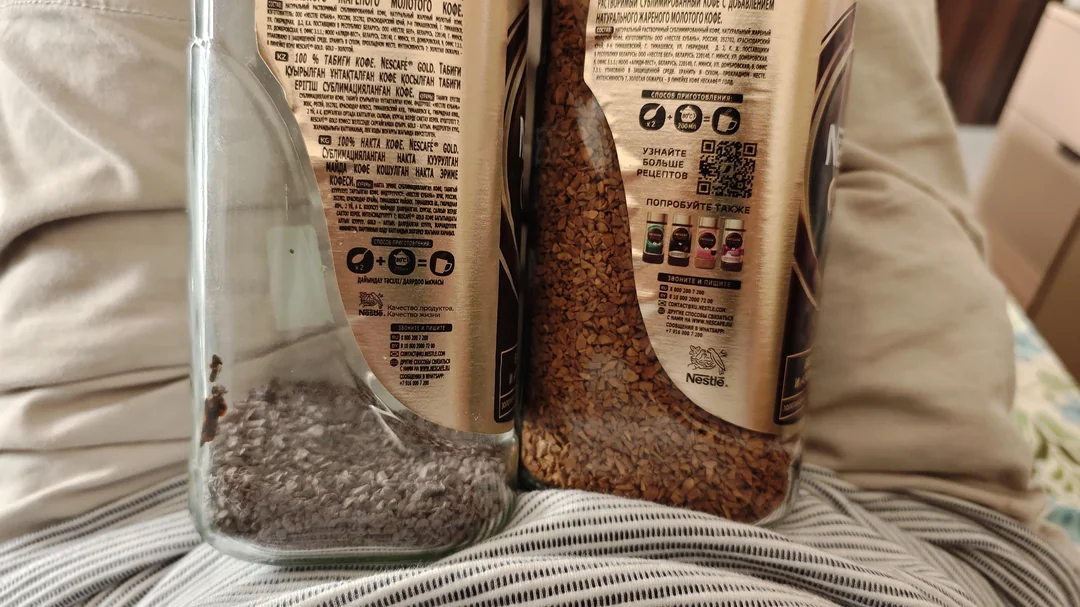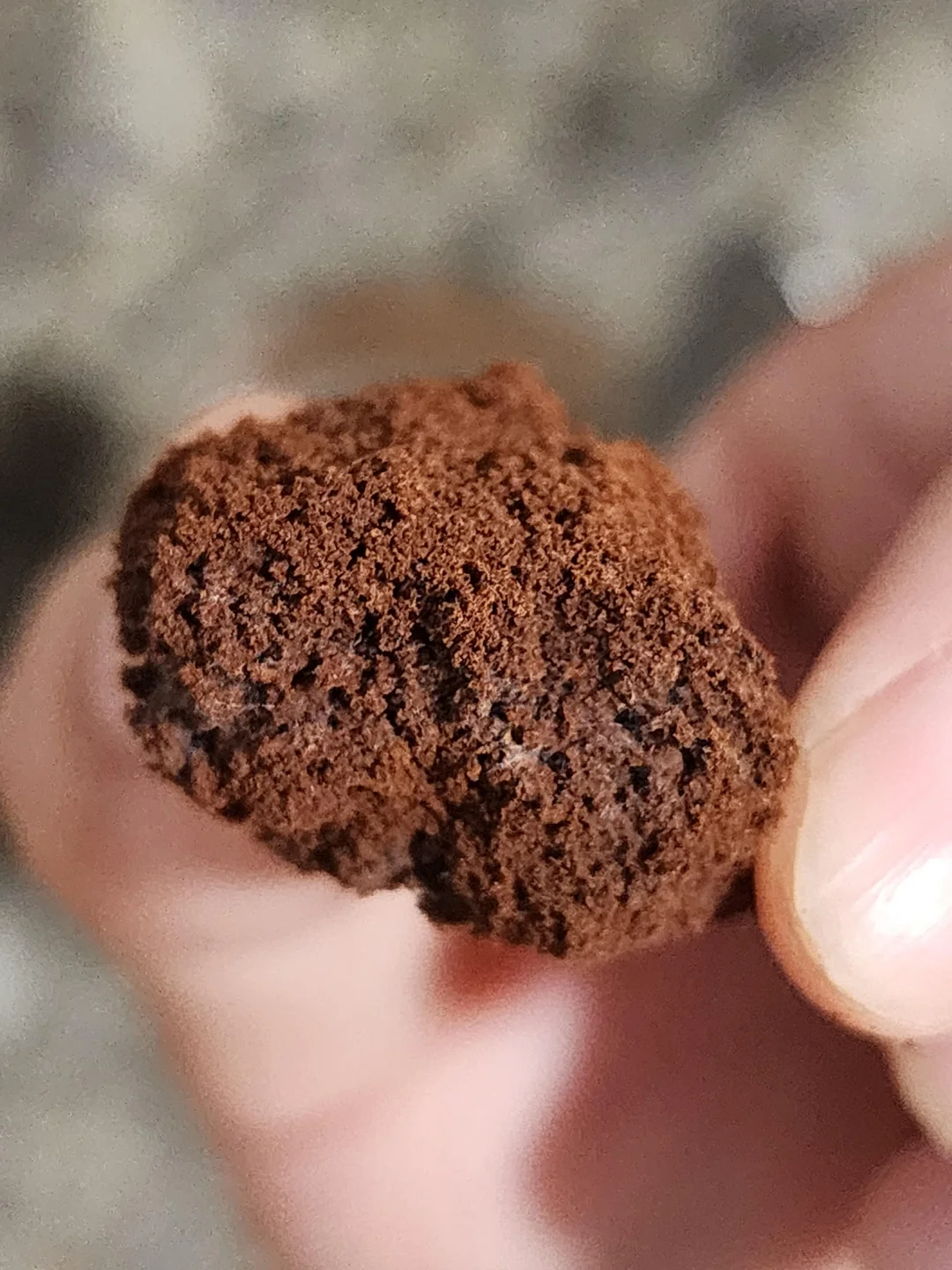You open your jar of instant coffee one morning and find that it has turned darker, clumped together, or even hardened into a solid block. It no longer looks light and powdery like before, and you start to wonder if it is still safe to drink. This is a common problem among coffee drinkers, especially in humid environments or when the coffee is not stored properly. Understanding why instant coffee turns black or grey will help you know what happened, whether it is still usable, and how to prevent it next time.
1. Why Instant Coffee Turns Black or Grey and Becomes Hard
When instant coffee changes color or texture, it usually happens because moisture, heat, or air exposure has affected its structure. Each of these factors interacts with the coffee powder in a slightly different way, but all lead to similar results: darkening, clumping, and loss of aroma.

a. Moisture: the most common cause
Instant coffee easily absorbs water from the air because it is hygroscopic. Even a small amount of moisture, such as from a damp spoon or open lid, can cause the granules to dissolve slightly and stick together. As the coffee dries again, the surface darkens and forms hard lumps.
According to research published in the Journal of Food Science and Technology (2019), instant coffee exposed to 70% humidity for just two days absorbed about 8% of its weight in water. This small increase was enough to cause visible darkening and texture changes. In short, humidity doesn’t just make the coffee clump; it changes its surface chemistry and appearance.
b. Heat exposure speeds up chemical reactions
When instant coffee is stored near a heat source such as a stove, oven, or window with direct sunlight, it can gradually darken. Heat triggers mild Maillard reactions between sugars and amino acids in the coffee, the same process that browns baked goods or roasted beans. This reaction causes a deeper brown or black color and slightly alters the aroma.
Tests conducted by Nestlé’s research division showed that instant coffee stored at 40°C lost nearly 25% of its aroma compounds after one month. Heat therefore not only dries the coffee but also accelerates its aging process, making it smell weaker and taste more bitter.
c. Air and oxidation dull the color
Every time you open your jar, air enters and brings oxygen with it. Over time, oxygen reacts with the compounds inside the coffee, slowly breaking down natural oils and antioxidants. This causes the powder to appear dull brown or even grey and weakens its flavor.
A 2021 study in Food Chemistry reported that oxidation can degrade chlorogenic acids and caffeine at room temperature, contributing to darkening and bitterness. If your lid is loose or not airtight, oxidation happens much faster and your coffee may lose freshness in just a few weeks.
Read more: Instant Coffee vs Drip Bag Coffee: Which One Should You Choose
2. Is It Safe to Drink Black or Grey Instant Coffee?
Whether the coffee is still drinkable depends on how severe the change is. If the coffee only looks slightly darker or forms soft clumps but still smells like coffee, it is safe to use. You can crush the clumps and dissolve them as usual.
However, if the coffee has turned very dark, greyish, or gives off a sour, moldy, or burnt smell, it is best to throw it away. Once moisture has penetrated deeply, microorganisms can begin to develop even if mold is not visible. A 2020 study in the Food Microbiology Journal showed that mold growth can start in hygroscopic powders once their moisture content exceeds 12%. If the coffee feels sticky or soft, it has likely absorbed too much water and should not be consumed.

3. How to Keep Instant Coffee Fresh and Prevent Discoloration
Good storage habits can keep your coffee in excellent condition for months. Always close the lid tightly after use and avoid leaving it open on the counter. Use only a completely dry spoon each time you scoop the powder. Store the jar in a cool, dry, and dark place away from sunlight and cooking heat.
Refrigeration is not recommended because refrigerators are humid environments. The ideal storage temperature is between 20°C and 25°C with low humidity. If you live in a tropical or coastal area, you can add a small food-safe desiccant packet to absorb moisture. Many people also prefer transferring instant coffee to a glass or metal airtight container instead of keeping it in the original plastic or paper packaging. When properly stored, instant coffee can maintain its aroma and color for up to six months longer than open packaging.
4. Conclusion
When instant coffee turns black or grey, it is usually not a sign of spoilage but of exposure to humidity, heat, or air. These factors change the structure of the coffee particles and lead to color and texture changes. If the coffee still smells normal and dissolves easily, you can use it without worry. But once it smells sour, musty, or looks unusually dark, the safest option is to replace it.
By keeping your coffee tightly sealed, dry, and away from heat, you can preserve its flavor and freshness for much longer. A few simple storage habits are enough to ensure every cup of instant coffee tastes just as good as the first one.
